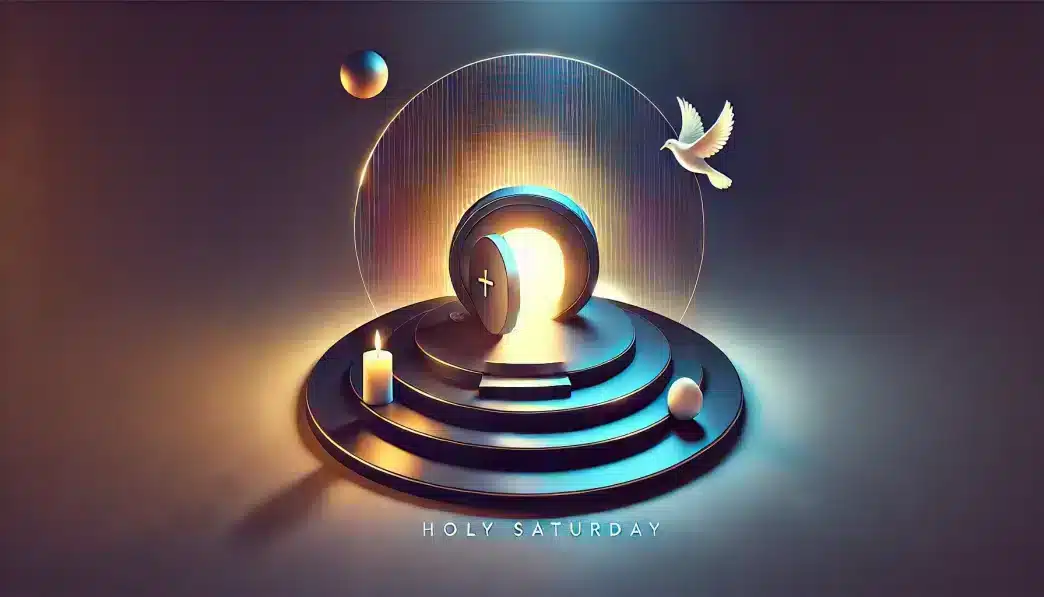Holy Saturday
Holy Saturday is observed on the final day of Holy Week, marking the time between Jesus’ crucifixion on Good Friday and his resurrection on Easter Sunday. It is a day of silence, mourning, and reflection as Christians remember Jesus’ body lying in the tomb. Holy Saturday is often called the Great Sabbath or Black Saturday, symbolizing a period of waiting, uncertainty, and faith.
Unlike other days of Holy Week, Holy Saturday is not filled with dramatic events. Instead, it is a time of quiet anticipation. For many Christians, this day represents the moment when hope seems lost, but faith endures. It is a day to reflect on the meaning of Jesus’ sacrifice before the joy of Easter morning.
Future Dates of Holy Saturday
- 2025: April 19
- 2026: April 4
- 2027: March 27
- 2028: April 15
- 2029: March 31
- 2030: April 20
- 2031: April 12
- 2032: March 27
- 2033: April 16
History and origin
The observance of Holy Saturday dates back to the early Christian Church. According to the Gospels, after Jesus’ death on the cross, his followers took his body down and placed it in a tomb. The chief priests and Pharisees, fearing that Jesus’ disciples would steal his body and claim he had risen, asked Pontius Pilate to place guards at the tomb.
In the early centuries of Christianity, Holy Saturday was a day of fasting, prayer, and preparation. It was also the time when new converts to the faith were baptized, symbolizing their participation in Jesus’ death and resurrection. This tradition continues today in many Christian denominations, with Easter Vigil services taking place on Saturday night to mark the transition from death to new life.
The day is often seen as a time of waiting. For Jesus’ followers, it was a day of deep grief, confusion, and fear. They did not yet understand that he would rise again. Today, Christians use Holy Saturday as a moment of spiritual reflection, preparing their hearts for the celebration of Easter.
Who participates in Holy Saturday?
- Christians around the world who observe Holy Week and Easter.
- Churches and religious communities that hold Easter Vigil services.
- Clergy and church leaders who guide believers in prayer and worship.
- Families and individuals who take time for reflection and preparation.
- Pilgrims and worshippers visiting holy sites, especially in Jerusalem.
Slogans and themes
Holy Saturday is a day of waiting, faith, and anticipation. Common phrases include “The Silence Before the Dawn,” “Hope in the Darkness,” and “The Tomb is Not the End.” Themes focus on patience, trust, and the transition from sorrow to joy. Many churches emphasize Jesus’ descent into the realm of the dead, where he is believed to have opened the way to salvation for the righteous who had died before his crucifixion.
Colors, symbols, and patterns
Colors
- Gray represents mourning, waiting, and uncertainty.
- Black symbolizes grief and the stillness of the tomb.
- White and gold appear at the Easter Vigil, signifying the transition to resurrection and joy.
Symbols
- The sealed tomb represents Jesus’ burial and the anticipation of resurrection.
- A candle in darkness symbolizes hope and the coming light of Easter.
- A stone rolled away represents the victory of life over death.
Patterns
- Shadowy or fading designs symbolize grief giving way to hope.
- Stillness and empty space represent waiting and contemplation.
- Gradual light patterns illustrate the coming dawn of Easter.
How to observe Holy Saturday
- Spend time in quiet reflection or prayer, meditating on Jesus’ sacrifice.
- Attend an Easter Vigil service, which marks the transition from death to resurrection.
- Read Gospel passages about Jesus’ burial and the women waiting at the tomb.
- Light a candle as a symbol of hope in the darkness.
- Prepare for Easter Sunday by focusing on renewal, faith, and gratitude.
Most used hashtags
- #HolySaturday
- #WaitingForResurrection
- #TheTombIsNotTheEnd
- #FaithAndHope
- #EasterPreparation
Why is Holy Saturday important?
Holy Saturday is a day that bridges sorrow and joy. It reminds Christians of the waiting period before the resurrection and teaches patience, faith, and trust in God’s plan. While Good Friday is about suffering and Easter is about victory, Holy Saturday is about endurance;the ability to hold on to faith even in silence and uncertainty.
For many, this day reflects the struggles of faith in difficult times. It acknowledges the pain of loss but also the promise of new life. The stillness of the tomb is not the end, but a waiting period before the triumph of Easter.
Features
Saturday before Easter: Holy Saturday
Why do you keep falling for the same type?
Read the article Lovemaps: the hidden blueprint of our love.

